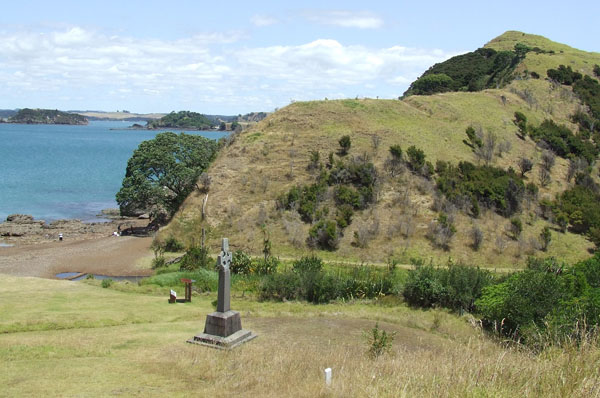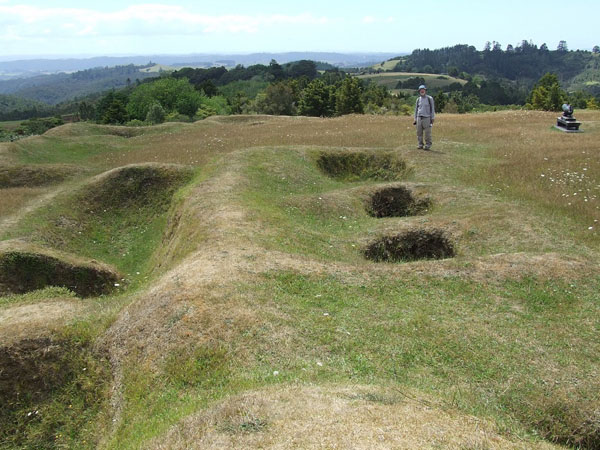The Maori and Colonial contact: Pā in their landscape context
Posted on: 6 February 2020 by Professor Harold Mytum in 2020 posts

The more pā sites Harold Mytum has visited as part of the Hill Fort Study Group (HFSG) visit, and we learn of the early relationships with the British, the more it is clear that the indigenous groups wielded considerable influence in the early decades of contact. The ways in which the Maori leaders of iwi (the largest kinship grouping) used interactions with foreigners for their own social advantage are clear.
Harold Mytum is most interested in the ways Maori embraced missionary endeavours; they were fascinated by Christianity and the intricacies of theological debate. The Rev. Samuel Marsden was based in Sydney and Parramatta in New South Wales (where Harold recorded his burial monument as part of his graveyard memorial research), but when visiting England in 1809 he met Ruatara, chief of the Ngāpuhi, and took him back to Parramatta and eventually to Rangihoua pā in the Bay of Islands. Marsden visited Ruatara in December 1814, held the first Christian service in New Zealand, and then founded the Oihi Mission Station at the foot of the hill with the pā. Permission for this was granted by Ruatara, who gained mana (prestige) by having these non-Maori under his protection and, to a large extent, his control.
A similar pattern is found at Kororipo pā, where the oldest surviving Mission House (now called Kemp House, constructed 1819) sits on the edge of the river overlooked by the Maori power centre of Hongi Hika. This is a frequent juxtaposition in Wales during the early Middle Ages when early church sites – defined by circular enclosures, the presence of holy wells and early medieval sculpture – are placed at the foot of slopes dominated by a fort. This physical proximity yet overlooking suggests patronage but also an element of control, and this is seen in Maori examples.

Interior of Ruapekapeka (Gunfighter) pā with earthwork defences which would have been topped with tall timber palisades, and foxholes for Maori warriors to shelter from British bombardment.
The mission at Kororipo also attracted traders, with the Stone Store being the first stone building in New Zealand, constructed 1835. Hongi Hika rose of prominence from c. 1806, and was the first to acquire muskets, beginning an arms race for western weaponry that dramatically changed internal Maori power relations. It also affected Maori abilities to confront British forces, most notably during the Northern Wars with serious British casualties at Gate pā, and at Ruapekapeka (Gunfighter) pā near Kawakawa where the British mounted a substantial military operation in 1845-46. They gradually moved closer to the pā with a series of redoubts but the pā’s defences and foxholes, all developed by the Maori in reaction to British military tactics, endured the bombardments. When the British stormed the pā they found that the Maori had slipped away in the face of the larger force.
The power of the Maori is reflected in the Treaty of Waitangi, where 40 chiefs signed a partnership document. Though bilingual and subsequently signed by hundreds more chiefs, there has been debate ever since as the Maori translation can be interpreted differently from the English version. As a result, the 1975 Treaty of Waitangi Act is being implemented as each iwi agrees recompense for loss of lands and regains control of substantial areas and culturally significant sites including many pā. This has affected management and interpretation, and will be discussed in another blog.
Discover more
Study in the Department of Archaeology, Classics and Egyptology at the University of Liverpool.
Keywords: new zealand, hillforts, harold mytum, student, archaeology, study, studying, Liverpool, university, Equality, Diversity and Inclusion.